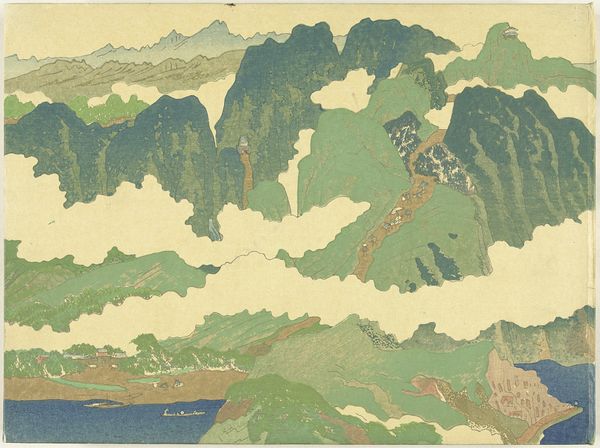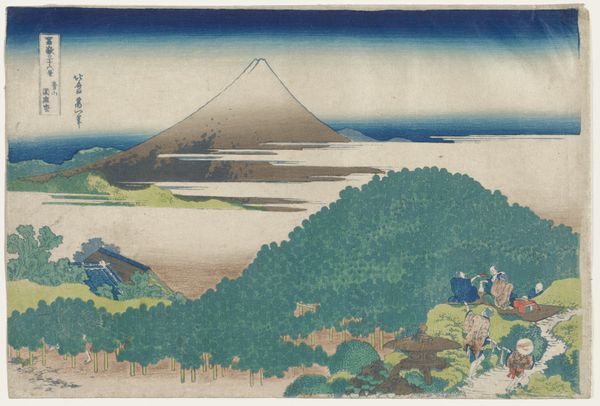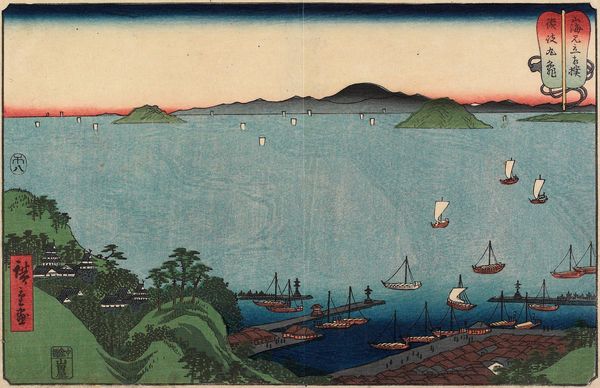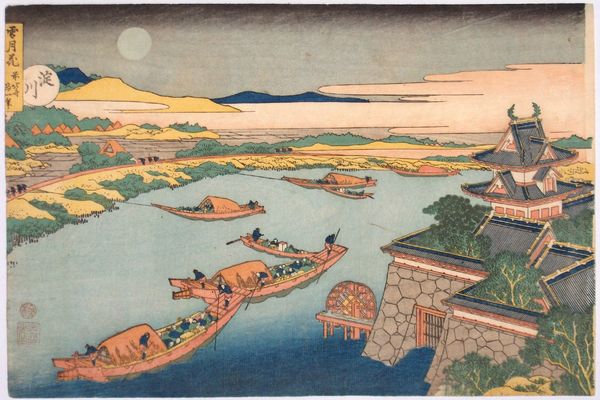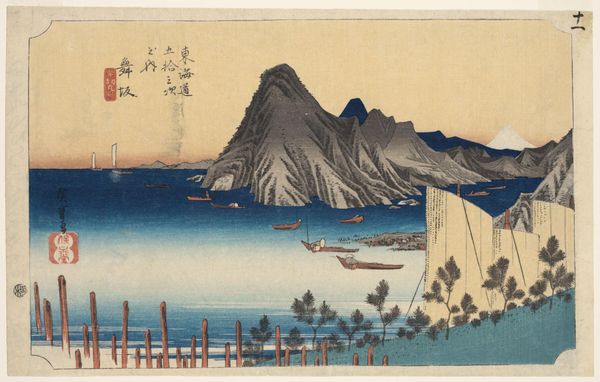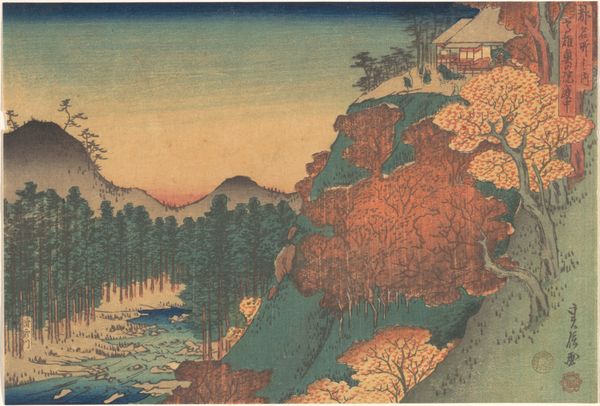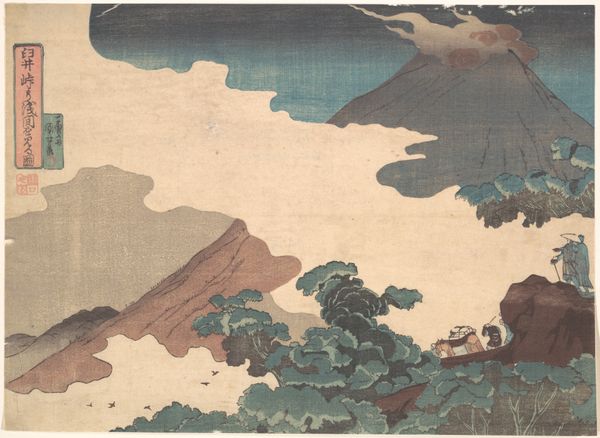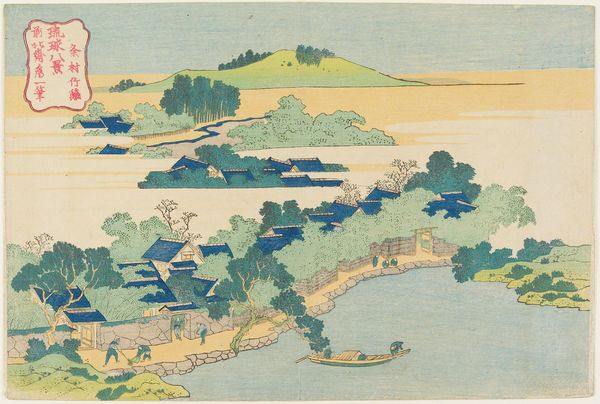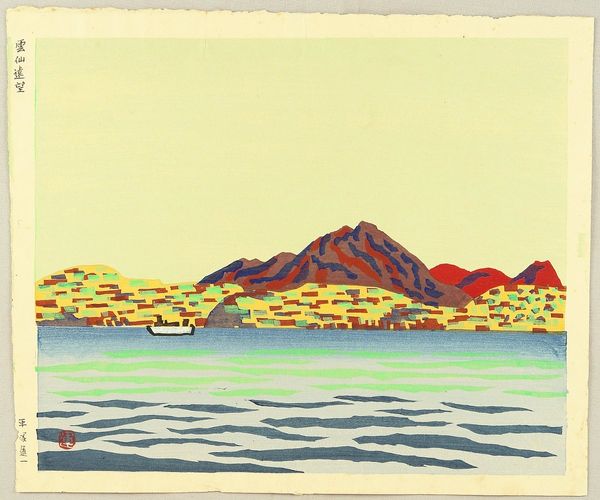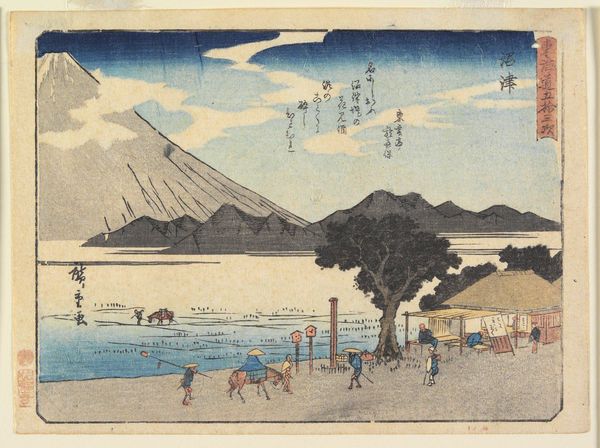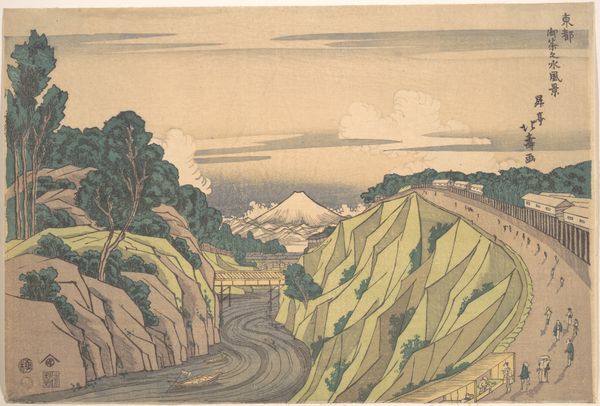
Minakuchi, Ishibe, Kusatsu, Otsu, Kyoto 1840
0:00
0:00
print, watercolor
# print
#
asian-art
#
landscape
#
ukiyo-e
#
figuration
#
watercolor
#
mountain
Dimensions: H. 10 1/8 in. (25.7 cm); W. 15 1/16 in. (38.3 cm)
Copyright: Public Domain
Curator: Let’s turn our attention to this evocative landscape print by Utagawa Kuniyoshi, created around 1840. It's titled "Minakuchi, Ishibe, Kusatsu, Otsu, Kyoto," part of a series depicting scenes along the Tōkaidō Road. Editor: Immediately, I’m struck by the tranquility it conveys. The vast expanse of water against the majestic, though muted, mountains evokes a profound sense of serenity. And that soft, coral-tinged sky…breathtaking. Curator: Indeed. Kuniyoshi’s ukiyo-e prints, especially landscapes like this one, were intricately produced through a collaborative process. Think about the woodblocks carved by skilled artisans, each line carefully etched to realize Kuniyoshi’s design. The paper, too, plays a role – its absorbency allowing the watercolor inks to blend seamlessly, giving it this unique atmospheric quality. Editor: And those little boats on the water…they’re not just there for scale, are they? They must have a deeper symbolism – journeys, perhaps, or the fleeting nature of life? Curator: It’s interesting you say that. Many believe such motifs symbolize the traveler’s journey toward enlightenment or a reflection on impermanence. Remember, prints like this weren't just landscapes; they reflected cultural values and beliefs about nature. It's not just a beautiful view, but also the intersection of cultural, psychological, and spiritual aspirations projected onto the scenery. Editor: It's also amazing how Kuniyoshi has depicted figures along the lower part of the composition. Travelers in their everyday labour which adds another layer to the print—the connection between humanity and landscape in pre-industrialized society. They ground the scene in the real world. Curator: Yes! These scenes offered a window into contemporary society, presenting it within an idealized landscape. Their clothing, loads on their backs... these are traces of real working individuals on their travels from Kyoto to the shogunate's capital at Edo. It challenges modern divisions between 'fine art' and accessible, commercially-produced art made and circulated in large quantities to a consuming audience. Editor: Absolutely. Examining Kuniyoshi’s work this way reveals not only a scene of natural beauty but also glimpses into societal practices. Thanks for pointing that out! Curator: It has been my pleasure! I have enjoyed connecting the dots in this discussion, bringing art historical understanding to complement the art’s symbolic appeal.
Comments
No comments
Be the first to comment and join the conversation on the ultimate creative platform.
